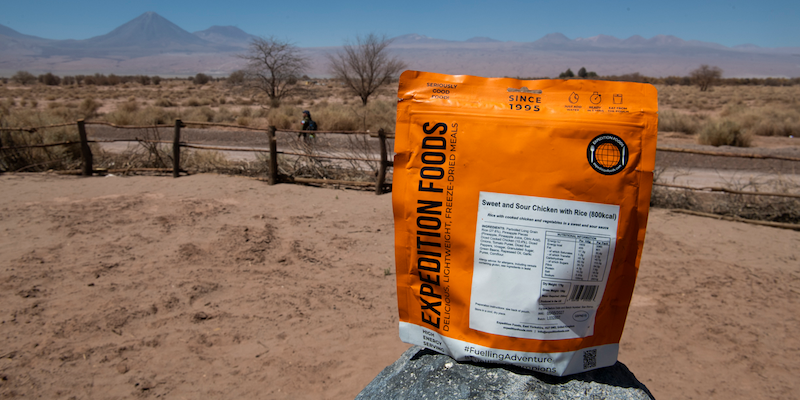Benefits of Freeze-Dried Food
People use the terms 'dehydrated' and 'freeze-dried' as though they are the same thing. However, there are significant differences between the two which we think you'll find interesting.
Freeze-drying is the most successful method of food preservation…
To preserve foods, the moisture contained within must be removed through a process called lyophilisation. If it isn't, micro-organisms (like bacteria) will thrive and feed, leading to food decomposition, mould growth and inedibility. Dehydrating and freeze-drying are the two more commonly used practices to do this.
'Dehydrating' has been used for centuries and dries out or smokes food by circulating hot and dry air across it. The moist air is then dried to continue removing any remaining water in the foods. The drying temperatures are set high enough to remove water but not to cook the food.
'Freeze-drying' is a relatively modern process. Food is placed on large racks inside a vacuum chamber where the temperature is lowered to below freezing, and then slowly raised. The water in the food transforms from a solid state to a gas, thereby maintaining the food's structure and preserving its all-important nutrients.
Out of these two processes, dehydrating removes about 90-95% of the moisture content whilst freeze-drying removes about 98-99%. The lower the moisture content, the longer the shelf life.
Freeze-dried foods can be stored for the longest time…
Most dehydrated products, like dried fruits, vegetables, powders and TVP (soy protein), have a shelf life of about 15-20 years. Dehydrated items like honey, salt, sugar, hard wheats and oats have a 30-year shelf life - sometimes longer. Freeze-dried fruits, vegetables, just-add-water meals and real meats have a longer average shelf life of approximately 25-30-years. Freeze-dried food can be stored at a wide range of temperatures without the food or packaging being affected - the food remains fresh for many years.
Freeze-drying retains the nutritional value of the fresh product, as well as its fresh flavour and colour…
Freeze-drying is akin to keeping the food in a state of suspended animation and so once rehydrated the food is as fresh and nutritious as it was the moment it was frozen. Dehydrating and canning involves the heating of food to temperatures which can impair its nutritional value by breaking down the vitamin and mineral content (vitamins A and C, thiamine, riboflavin and niacin). The taste can also be affected and heat can denature and break food fibres which change the texture.
Freeze-drying makes food more palatable…
With dehydration, the end result is either usually withery (think dried apricots) or hard and crunchy (think dried banana chips). If the same banana chips were freeze-dried, they'd become soft as soon as you put them in your mouth.
Freeze-drying significantly reduces the weight of food…
Lyophilisation removes about 98% of a food's water content and so the weight of that food is reduced by as much as 90%. For people having to carry their own food for days or months at a time this is a huge benefit. Freeze-dried foods weigh a lot less than dehydrated foods, important for most of our customers who take part in long-haul endurance events where food weight and package size are crucial planning factors.
Freeze-drying is faster to prepare…
Dehydrated foods require cooking. Many times, they also require some type of seasoning. This means that you need to spend time boiling the product in hot water and letting it cook, which can take anywhere from 15 minutes to 4 hours! With freeze-dried foods you just need to add water – hot or cold will do (up to 5-8 minutes usually), although it might take a bit longer using cold At the end of a long day, or during a precious few minutes' lunch break, no one wants to be kept waiting for their hard-earned rations!
As a general rule of thumb, dehydrated foods cost less than freeze-dried ones. However, the difference in price should be weighed up carefully against the marked nutritional benefits, weight, taste and storability of freeze-dried. Happy eating!


